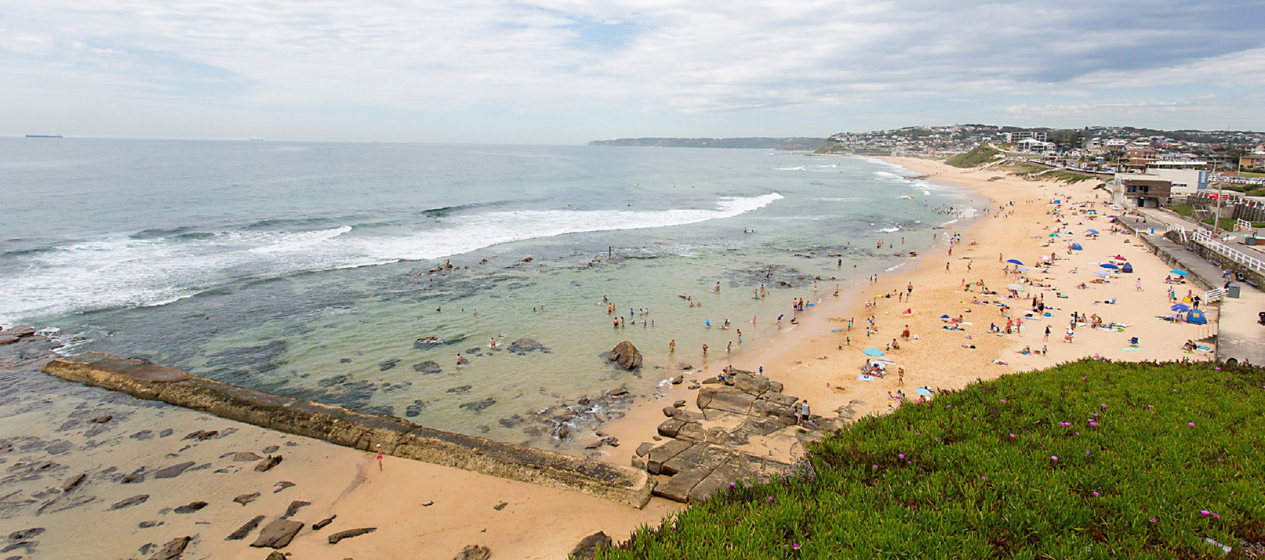Arts, culture and architecture
Newcastle is a city bursting with culture, arts and architecture.
Check out these must see attractions:
Christ Church Cathedral
52 Church Street, Newcastle
The Christ Church Cathedral story dates back to 1804, when Governor King instructed Lieutenant Menzies to facilitate Sunday prayer. By 1812 there was a slab hut on the site of today’s cathedral, where people gathered for worship. The first church was built on the site in 1817, while in 1868 the process of building what is still standing today began. It was a project beset by problems, legal and otherwise, and stalled on more than one occasion. The additional of the great tower and bells in 1979 completed the building.
Insta-worthy: Climb the tower and get a 360-degree view of the city.
Know your Newcastle: The expansion work on the Cathedral, including chapels and vestries, was the work of prolific Newcastle architect FG Castleden, who also designed, among other things, the Newcastle Club.
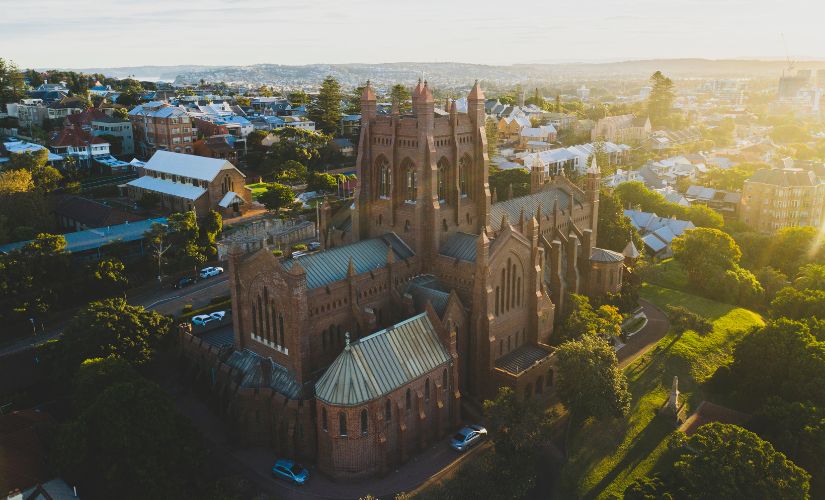
Christ Church Cathedral, Newcastle © Destination NSW
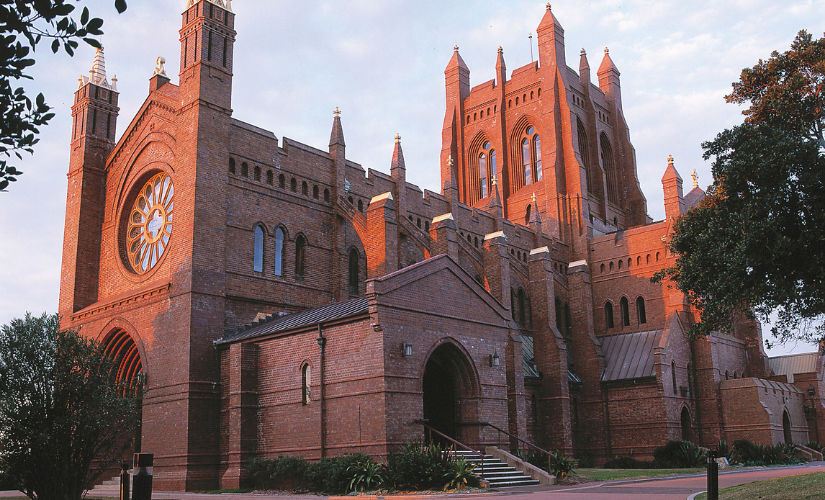
Christ Church Cathedral, Newcastle
Civic Theatre
373 Hunter Street, Newcastle
The Civic Theatre dates back to 1929, and was designed by Henry Eli White, a famed architect of the time, and the man responsible for Newcastle’s City Hall, as well as the State Theatre and Capitol Theatre in Sydney. It has a Georgian Revival style, while the theatre’s interior is an outstanding example of Baroque styling. While it was built as a live performance venue, it was immediately leased and used as a cinema until the mid-70s, when live performances began to be held. Little maintenance had been done to the building over the years, so in the early 90s it underwent a much-needed multimillion-dollar renovation. The Civic attracts the cream of touring performances, and is the place to go for live entertainment.
Insta-worthy: The Spanish Baroque interior – superb example of this style.
Know your Newcastle: The Civic was (at long last) heritage listed in 2012.
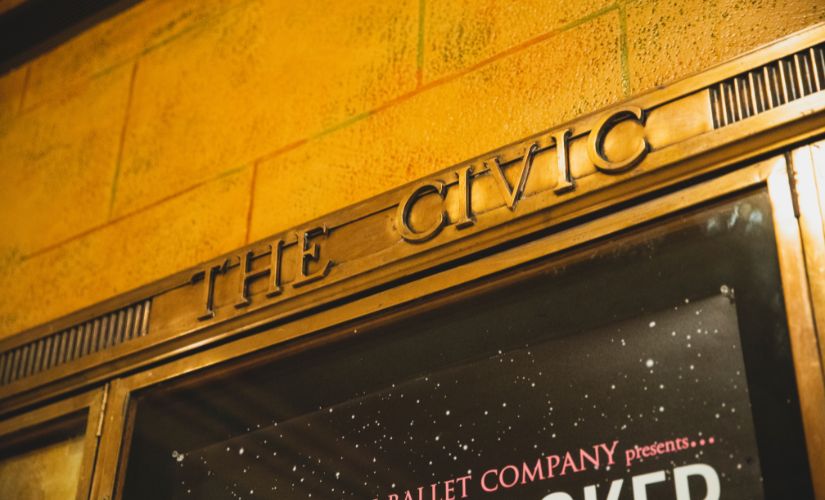
Civic Theatre, Newcastle © Destination NSW
Eternal Flame
Civic Park, Cnr King & Darby Streets, Newcastle
A memorial in honour of war veterans past, present and future, the Eternal Flame – Newcastle’s first – was unveiled in November 2018 to mark 100 years since the end of World War One.
Insta-worthy: Capture the Eternal Flame with the Cenotaph in the background.
Know your Newcastle: The plinth of the Eternal Flame is built from the same granite as the adjacent Cenotaph.
Fort Scratchley
1-3 Nobbys Road, Newcastle East 2300
Built in the 1880s to defend the city, Fort Scratchley is a Newcastle icon, sitting proudly on a vantage point overlooking the ocean. Its first guns weren’t fired for 60 years, finally seeing action when a Japanese submarine attacked during World War Two. Today, Fort Scratchley is a historical museum.
Insta-worthy: An amazing underground network of tunnels awaits.
Know your Newcastle: Before it became Fort Scratchley, this was the site of Newcastle’s first coal mine.
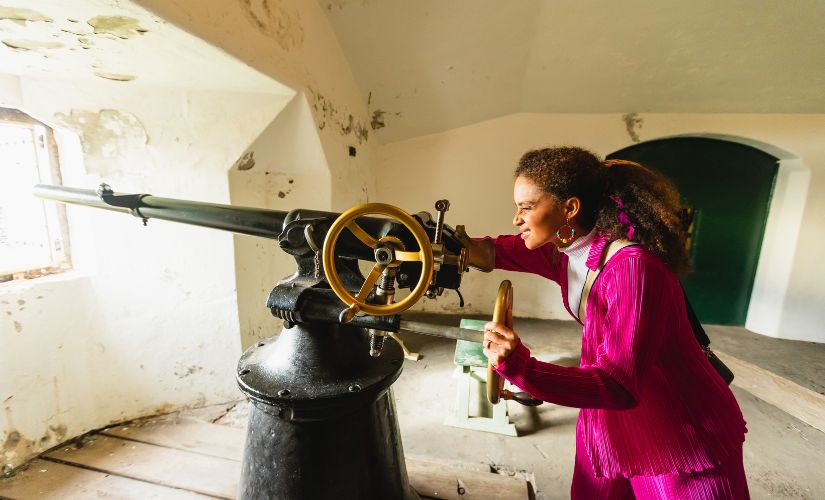
Fort Scratchley, Newcastle
James Cook Memorial Fountain
Civic Park, Corner of King and Darby Street, Newcastle
The James Cook Memorial Fountain has been a Newcastle icon since the 1960s, when sculptor Margel Hinder won a competition held by the Council to find an artist to create an illuminated sculpture for Civic Park.
Insta-worthy: The illuminated fountain by night.
Know your Newcastle: The fountain is the inspiration for the previous City of Newcastle’s logo.
The Lock-Up
90 Hunter Street, Newcastle
One of the city’s most significant historical buildings, this building was Newcastle's police station and lock-up from 1861 to 1982. Designed by Mortimer Lewis Jnr under the direction of James Barnet, and made of Sydney sandstone, this heritage-listed building retains the cells in which many spent time ‘locked up’, and is now used as a “multidisciplinary contemporary arts space and inner-city hub for creative thinking and doing”.
Opening times: Wednesday-Saturday 10am- 4pm, Sunday 11am-3pm
Insta-worthy: The padded cell - thought to be the best-preserved padded cell from the Colonial era in Australia.
Know your Newcastle: From this building the Newcastle Police Force not only maintained day-to-day law and order, but also sought to control the notorious 1920s Bank Corner Mob and the city’s illegal gambling houses.
Newcastle Memorial Walk
25 Memorial Dr, Newcastle
Opened in 2015, this stunning 450m long walkway and bridge links Strzelecki Lookout to Bar Beach and was built with 64 tonnes of stainless steel. The steel silhouettes of soldiers are inscribed with almost 4000 family names of local men and women who served during World War One.
Insta-worthy: Capture the walk at dusk, illuminated by 525 individual LED lights.
Know your Newcastle: The Anzac walk was designed by local architect Barney Collins, who also designed the University of Newcastle’s NeW Space in the city centre, and who headed up the team who restored our Christ Church Cathedral after earthquake damage in 1989.
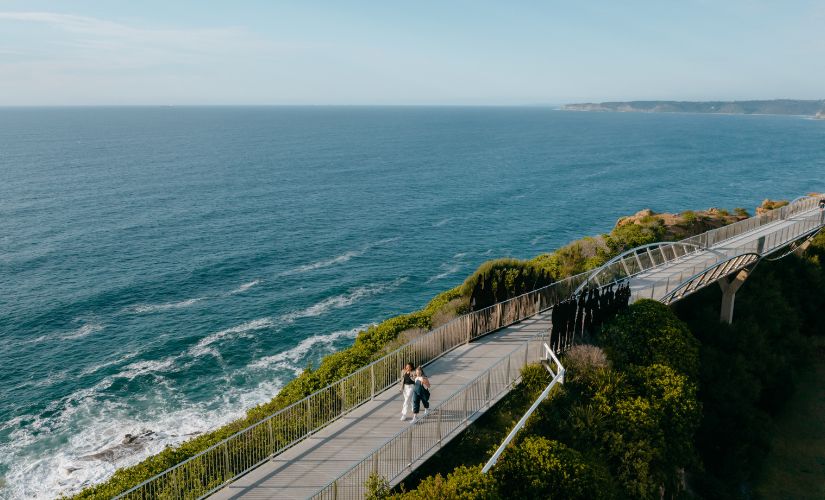
ANZAC Memorial Walk, Newcastle
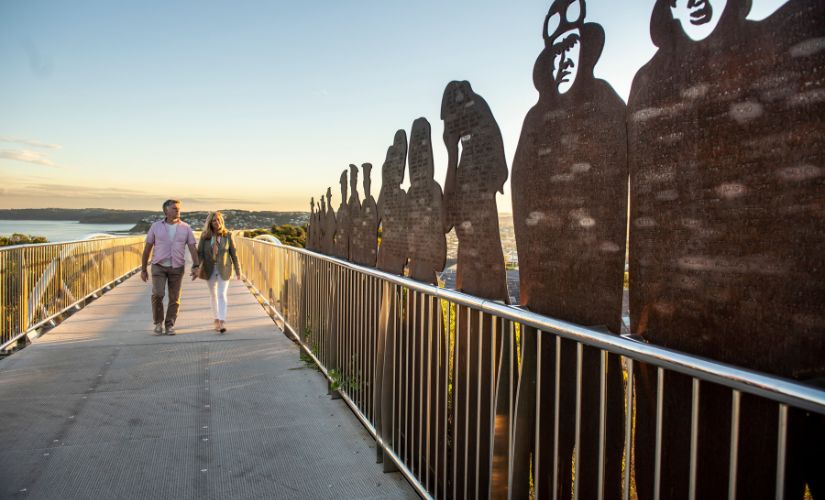
Steel silhouettes - ANZAC Memorial Walk, Newcastle © Destination NSW
Convict Lumber Yard
Enterprise Park, Scott Street, Newcastle
One of the earliest sites of convict industry in Australia, the Lumber Yard was the place where red cedar timber that had been felled, bound and chopped by convicts was stored.
Insta-worthy: The many steel creations representing the site’s heritage.
Know your Newcastle: The significance of the site was realised in 1987 upon the discovery of convict bricks. An archaeological dig took place between 1989-1992, during which time artefacts from the convict time and, deeper, important indigenous materials were found.
Miss Porter's House
434 King Street, Newcastle
Miss Porter’s House is a Newcastle treasure, and transports you back in time to pre-1950s Newcastle life. Built in the early 20th Century by a Porter, the house remained in the family until it was left to the National Trust in 1997. It’s only open to the public every second Sunday of the month, but it’s certainly worthwhile if your trip coincides.
Opening times: Second Sunday of each month (February-December). 1pm-4pm on Australia Day. School, tour or community groups any time by appointment.
Insta-worthy: The stencilled ceilings are something to behold.
Know your Newcastle: Miss Porter’s House is Newcastle’s only National Trust property.
Newcastle Museum
6 Workshop Way, Newcastle
Housed in the former Honeysuckle Railway Workshops, the Newcastle Museum showcases a classic piece of railway architecture. The Locomotive Boiler Shop, which is home to the Supernova science exhibition, dates back to the 1880s, while the New Erecting Shop (home to the Fire and Earth exhibition, celebrating the city’s heavy industrial past) was built in the 1920s (to replace the Old Erecting Shop).
The Blacksmith and Wheel Shop also date back to the 1880s, and are now home to enclosed exhibitions and a theatrette.
Opening times: Tuesday-Sunday, 10am-5pm and everyday during school holidays.
Insta-worthy: The iconic ‘Most Attractive Couple in Newcastle’ street art on the Museum wall, created by adopted Novocastrian Trevor Dickinson.
Know your Newcastle: The Locomotive Boiler Shop was Elcom’s first diesel operated power station in 1951 and from 1957 served as a motor vehicle garage for NSW State Rail Authority.
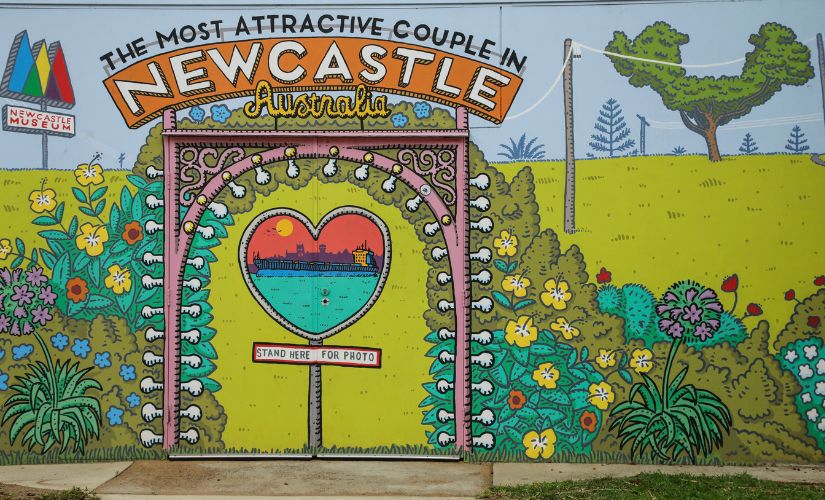
Most Attractive in Newcastle street art
Newcastle Art Gallery (Currently CLOSED for upgrades)
1 Laman St, Cooks Hill
The Newcastle Art Gallery today holds almost 6500 works of art, and its story began in 1945 when an ophthalmic surgeon from Sydney, by the name of Dr Roland Pope, promised the bequest of his 123-piece art collection to Newcastle - on condition that a gallery was built to house it. The Newcastle City Art Gallery, on the second floor of the War Memorial Cultural Centre, was opened in 1957. The purpose-built gallery that we now know and love was opened by HRH in 1977. It was designed by local architect Brian Pile, and is an important example of early 1970s architecture with its geometric forms and brutalist aesthetic.
Opening times: Tuesday to Sunday 10am-5pm and every day during the school holidays.
Insta-worthy: Black Totem II, the outdoor sculpture – one of only two by renowned Australian artist Brett Whiteley.
Know your Newcastle: Newcastle Art Gallery is Australia's first purpose-built regional gallery.
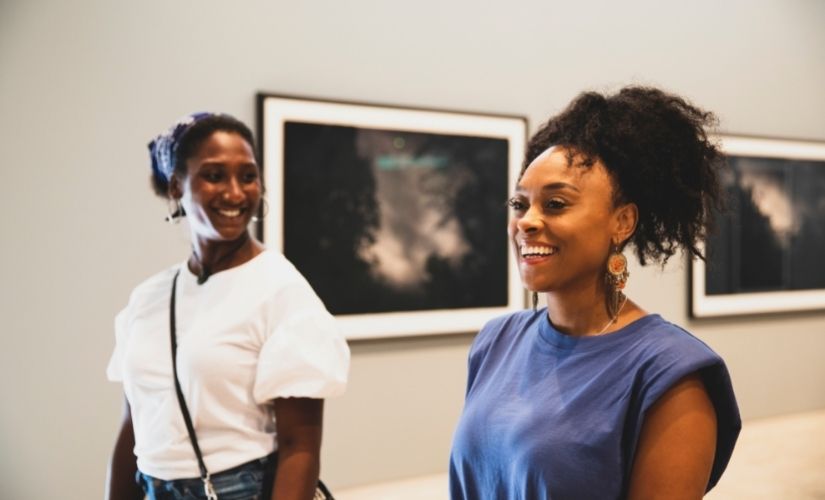
Newcastle Art Gallery, Cooks Hill © Destination NSW

